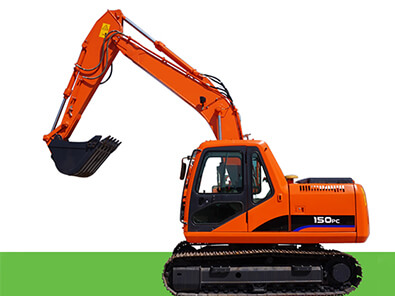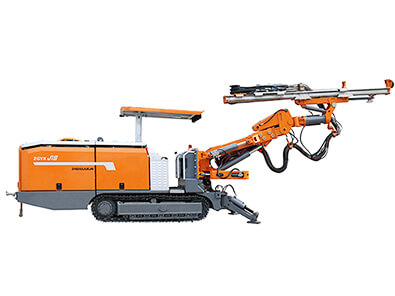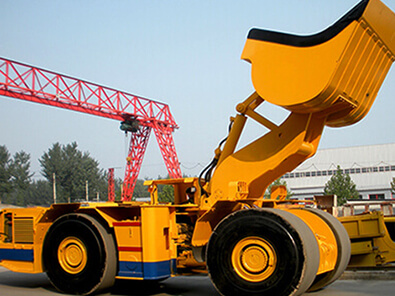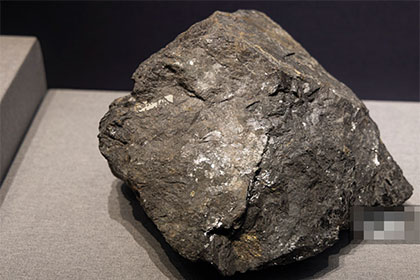2025 Beginner’s Guide about Coltan Mining
 Shirley
Shirley
 Jul 29, 2022
Jul 29, 2022
 7908
7908
If you want to know more details about equipment, solutions, etc, please click the button below for free consultation, or leave your requirements!

(Gravity separation plant)
Coltan metals are widely used in the manufacture of high-tech products such as mobile phones and computers. The electronics industry has extensive demand for it, and the development of coltan mineral resources is increasing day by day. Here is a detailed guide for beginners who are investing in this field about coltan mining methods and coltan extraction.
01 Coltan ore properties
BackColtan is a metal ore containing niobium and tantalum. The relative density of niobite is 5.3~7.3, the Mohs hardness is 4.3~6.5, and the relative density of tantalite is 8.2. The Mohs hardness is 6.5~7.2. The ore is black to brownish black, transparent to translucent; semi-metallic luster. Massive aggregate, fine-grained, lamellar, streaked; orthorhombic. Coltan is mainly produced in pegmatites and shock rocks.
Both niobium and tantalum have the advantages of corrosion resistance, good cold working properties and good electrical properties of oxide films. Niobium is widely used in steel, electronics, aerospace fields. Tantalum is mainly used to make capacitors. Electrolytic capacitors made of it have large capacity, small size and high reliability. They can be used in mobile phones, computers, and automotive electronics.

(Computer electrolytic capacitors made of Tantalum)
02 Coltan mining methods and equipment
BackFor the difference in geological conditions and ore body burial depth, there are two methods of Coltan mining: open-pit mining and underground mining.
(1) Open pit mining
Most Coltan mines have shallow or outcropping ore bodies that are suitable for open-pit mining.
Surface mining methods include drilling, blasting, mining and transportation. In addition, there are auxiliary operations such as soil dumping, surface water release in mining areas, mine deposit drainage and landslide prevention. The specific mining steps are here:
Step1 Use roller cone drilling rigs, down-the-hole drilling rigs, etc. to arrange holes in row, rectangular or beautified shapes

(Drilling machine for coltan mining)
Step2 Blasting using methods such as loose blasting and throw blasting
Step3 Excavate the blasted rock and load the material into the transport equipment or directly unload it to the designated location.

(Excavator for coltan mining)
Step4 Transport ore to the receiving point by automobile, rail and tape transportation.
There are two cases of coltan mining process, and for the difference in ore body, they take different mining steps.
A mine in China adopts the mining process of drilling and blasting, electric shovel shipment, and combined transportation of automobiles, slides, and electric locomotives.
A mine in Brazil adopts the open-pit multi-step mining method, which does not require drilling and blasting, and is directly mined with excavators and loaders, with high efficiency and low cost.
Advantages of open-pit mining: large production space and good operating conditions; large-scale blasting and large mining capacity; high labor production efficiency and low cost; easy to recover the associated resources of the ore deposit; safer production.
Disadvantages of open-pit mining: occupies a lot of land, and the landscape is greatly fragmented; environmental pollution and noise problems are prominent.
(2) Underground mining
Underground mining is carried out in three steps: deposit development, mining and cutting, and recovery. The specific mining steps are here:
Step1 Excavate shaft and filling chute from the ground to connect the ore body. This constitutes a complete underground transportation, ventilation, water supply, drainage and air compression system.
Step2 Start alignment and cutting to directly caving out the ore, creating a work space and face for subsequent mining.
Step3 Start mine the sections where the sizing and cutting work has been completed. Mining operations include mine collapsing and ore handling.

(Minecart)
There are three types of underground mining methods: natural support open field method, caving method and filling method. The natural support open field method is further divided into the comprehensive mining method, the room-and-pillar method, the ore-keeping mining method and the subsection mining method. The room-and-pillar method is widely used in raw coltan ore.
For example, the Niabak Mine in Canada operates 300m underground, and uses a medium 100mm DTH drilling rig for perforation. The ore is lifted to the ground through the cage, and then sent to the concentrator with a belt conveyor.
The Bernick Lake Concentrator in Canada uses drilling rigs to perforate, and uses the flank shaft mining method for the chestnut Shuiximiao Mine to develop and transport multi-purpose spiral slopes.
Altay Mine and Hengfeng Tantalum-Niobium Mine adopt the shallow-hole ore retention method, and the shaft-flat-hole-motor transportation is adopted. Hengshan Dan niobium mine is mined by caving method.
Advantages of underground mining: less land occupation and less damage to landforms. Higher grade ore is available and less ore needs to be mined.
Disadvantages of underground mining: higher investment, lower safety, lower production volume and production efficiency.
03 Coltan extraction process and equipment
BackColtan ore has a high density, and gravity separation is the most used beneficiation methods, followed by flotation or gravity flotation, magnetic separation, and electrical separation.
(1) Coltan gravity separation
The density of Coltan minerals is high, and the ore produces relative motion under the action of gravity, so minerals of different densities are sorted. During the sorting, niobium and tantalum minerals are finally enriched in the heavy ore part. Reselection is performed in a medium (air, water, heavy liquid or resuspension). According to the form of medium movement, the purpose of operation and the equipment used, gravity separation is divided into jig beneficiation, shaking table beneficiation and spiral chute beneficiation.
Jig beneficiation
Jig is an equipment used for processing coarse-grained and medium-grained niobium-tantalum materials. The particle size of the material is generally 0.1~300mm, but it is most suitable for 20~0.2mm. The material in the jig is based on the sorting process carried out in the vertical variable speed medium. The advantages of the method are that the production capacity per unit area is large, the recovery rate of coarse particles is high, but the recovery rate of fine particles (less than 0.074mm) is low, and the equipment cost is high.

(Jigging machine)
Shaking table beneficiation
Shaking tables are mostly used to process coltan with uneven medium grains and fine grains. The mineral particles are subjected to the action of lateral water flow and longitudinal reciprocating motion on the shaking table to achieve the purpose of separating according to mineral density and particle size. The method has the characteristics of high enrichment ratio and good separation effect, and can obtain concentrate at one time. The upper limit of processing materials is 20um. It is used to process a kind of granite niobium iron ore (the maximum grain size is 0.3mm, generally 0.1~0.03mm), and the after two-stage grinding and shaking table process, niobium-tantalum coarse concentrate((Nb+Ta)2O5, 0.648%, SnO2, 1.66%) is obtained, the recovery rate of coltan minerals reaches 64.13%.

(Shaking table)
Spiral chute beneficiation
Spiral chute is suitable for processing ore with a particle size of 0.1~6mm. After the pulp is fed into the spiral groove, the ore particles rotate downward along the groove in the pulp. Under the action of gravity, friction and water flow, they are separated according to the shape and density of the ore particles. The heavy minerals are close to the inner edge of the spiral groove, and the light minerals are Close to the outer edge of the spiral groove, the fine mud and most of the water are close to the outermost edge of the spiral groove, and the raw ore is divided into four ore belts: concentrate, medium ore, tailings and fine mud, which are received separately. The spiral chute has a simple structure, small footprint, large production capacity per unit area, and low energy consumption, but it is less efficient for processing fine-grained ore below 0.1mm. More blogs about gravity separation here.

(Spiral chute)
(2) Coltan flotation
Flotation utilizes the differences in the physical and chemical properties (such as wettability to water) of the surface of each mineral to separate useful minerals and gangue. During flotation, some chemicals are used to interact with the mineral surface to change the hydrophilicity or hydrophobicity of the mineral surface. It is carried out in the flotation machine. During flotation, air needs to be introduced into the flotation machine to generate bubbles and meet the ore particles. At this time, the useful minerals will adhere to the bubbles and be brought to the liquid surface. A layer of mineralized foam is formed and scraped by the flotation machine scraper. Flotation is very suitable for finer ore particles. Generally, the coarse coltan particles are treated by gravity separation first. And then the fine coltan particles is processed by flotation.

(Flotation machine)
(3) Coltan magnetic separation
Magnetic separation utilizes the magnetic differences among various minerals. Materials separate according to whether they are attracted or repelled by the magnet. Coltan ore has weak magnetic properties and can be separated by a strong magnetic separator. In actual production, in order to improve the separation efficiency and recovery rate, the coarse-grained minerals in the coltan ore are usually separated by gravity separation, and then the fine-grained part is separated by wet strong magnetic separation. Magnetic minerals are then processed by gravity machines to obtain coltan rough concentrate.

(Magnetic separator)
(4) Coltan electric separation
Electro-separation uses the electrical difference between coltan and other minerals to separate them in a high-voltage electric field. The electrical conductivity, dielectric constant and specific conductivity of minerals play a major role in the electrification. The greater the difference in specific conductivity of minerals, the easier it is to be separated. After the mineral enters the electric field, it is simultaneously affected by electric force (Coulomb force, suction force caused by non-uniform electric field and interface suction force, etc.) and mechanical force. At present, the corona-electrostatic compound electric field concentrators and roller type electric separators are the most widely used in coltan ore beneficiation.
The above methods should be combined according to the different properties of the ore. The roughing of raw Coltan ore mainly adopts the gravity separation process, and a few use the gravity separation-flotation-gravity separation process or the gravity separation-magnetic separation-gravity separation combined process. Besides niobium and tantalum minerals in general rough concentrates, there are often useful minerals such as cassiterite, chrysosite, phosphorite, monazite, and ilmenite, therefore, it is necessary to continue process the rough concentrate by methods such as gravity separation, flotation, magnetic separation, electrical separation.
Coltan rough concentrate beneficiation usually adopts gravity separation-magnetic separation-gravity separation process (such as Bernic lake mine in Canada), gravity separation-magnetic separation-flotation process (such as China Xinjiang Cocoto Haidan niobium ore beneficiation process) Factory, etc.), gravity separation-magnetic separation-electro-separation (such as the selection of Greenbush Concentrator in Australia), combined process of beneficiation and metallurgy (China Guangxi Chestnut Tin Concentrator, Brazil Araksa Concentrator), etc. Due to the generally low grade of Coltan raw ore, a variety of beneficiation methods and reasonable process combinations are required, so that the recovery rate of roughing can reach the level of 45%~60%.
04 Countries with larger Coltan mine reserves
Back80% of the global coltan reserves are in Africa, and 80% of Africa coltan reserves are in Congo (DRC). Below are the 15 countries with the larger reserves of coltan, in no particular order.
Democratic Republic of Congo
Australia
Australia
Canada
Brazil
China
Thailand
Malaysia
Ethiopia
Nigeria
Zimbabwe
Mozambique
Namibia
South Africa
Egypt
However, due to the Congo war and the coltan conflict between Uganda-Rwanda-Congo (DRC), many electronic equipment manufacturers have decided to boycott all African coltan and in favor of other countries' coltan.
05 Niobium and Tantalum metal price
BackThe latest quotations for May-July 2022 show that the prices of niobium and tantalum are stable at $96.33/kg and $533.55/kg, respectively.
(Note: The exchange rate between USD and RMB is 6.75)
06To warp up
BackThe above is an introduction to the coltan mining and beneficiation process and equipment. If you have any questions, you can leave a message below and we will reply you ASAP.
 +86 183 3575 8886
+86 183 3575 8886 pinklaurabao@gmail.com
pinklaurabao@gmail.com




 Message
Message Chat Now
Chat Now




















